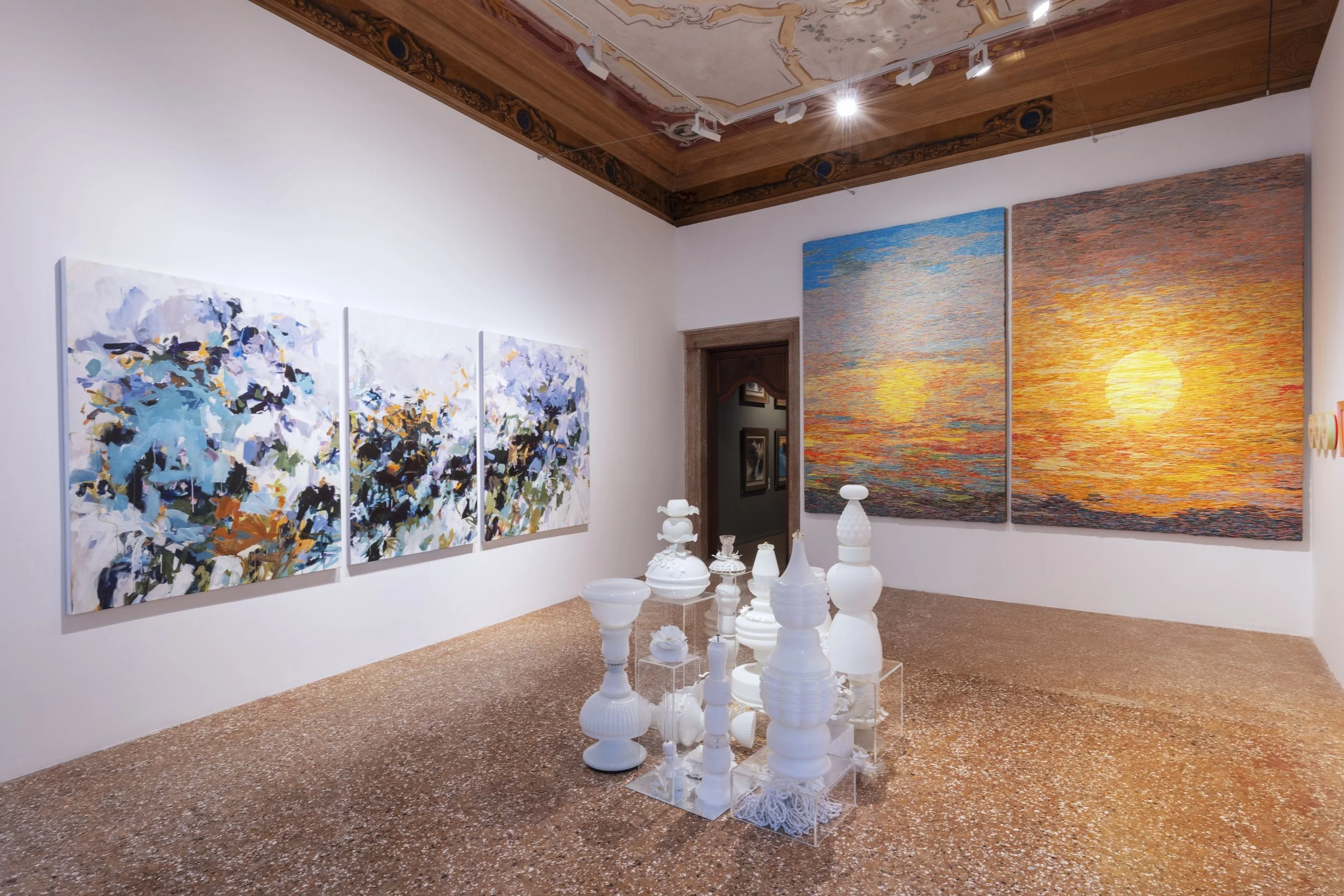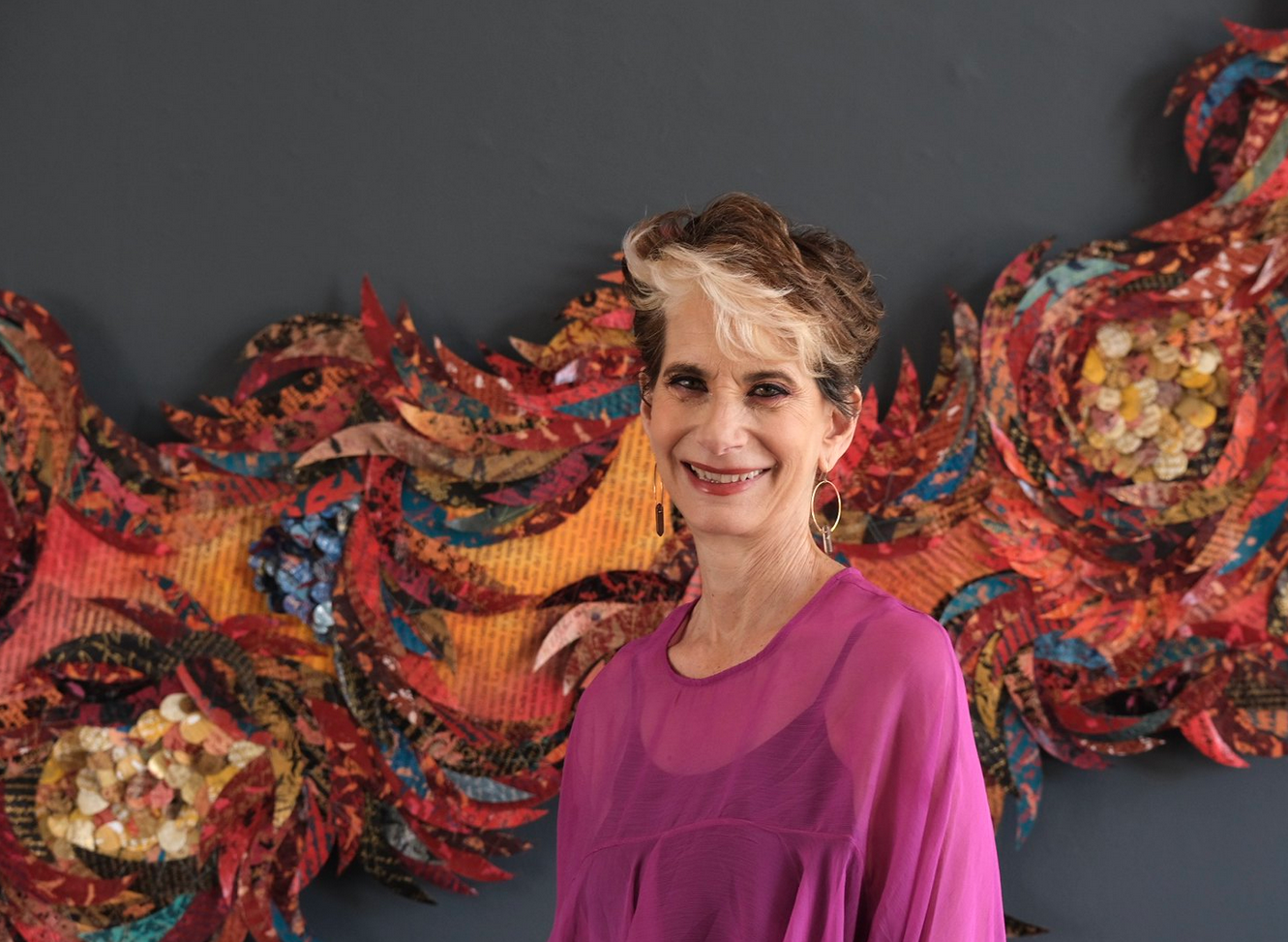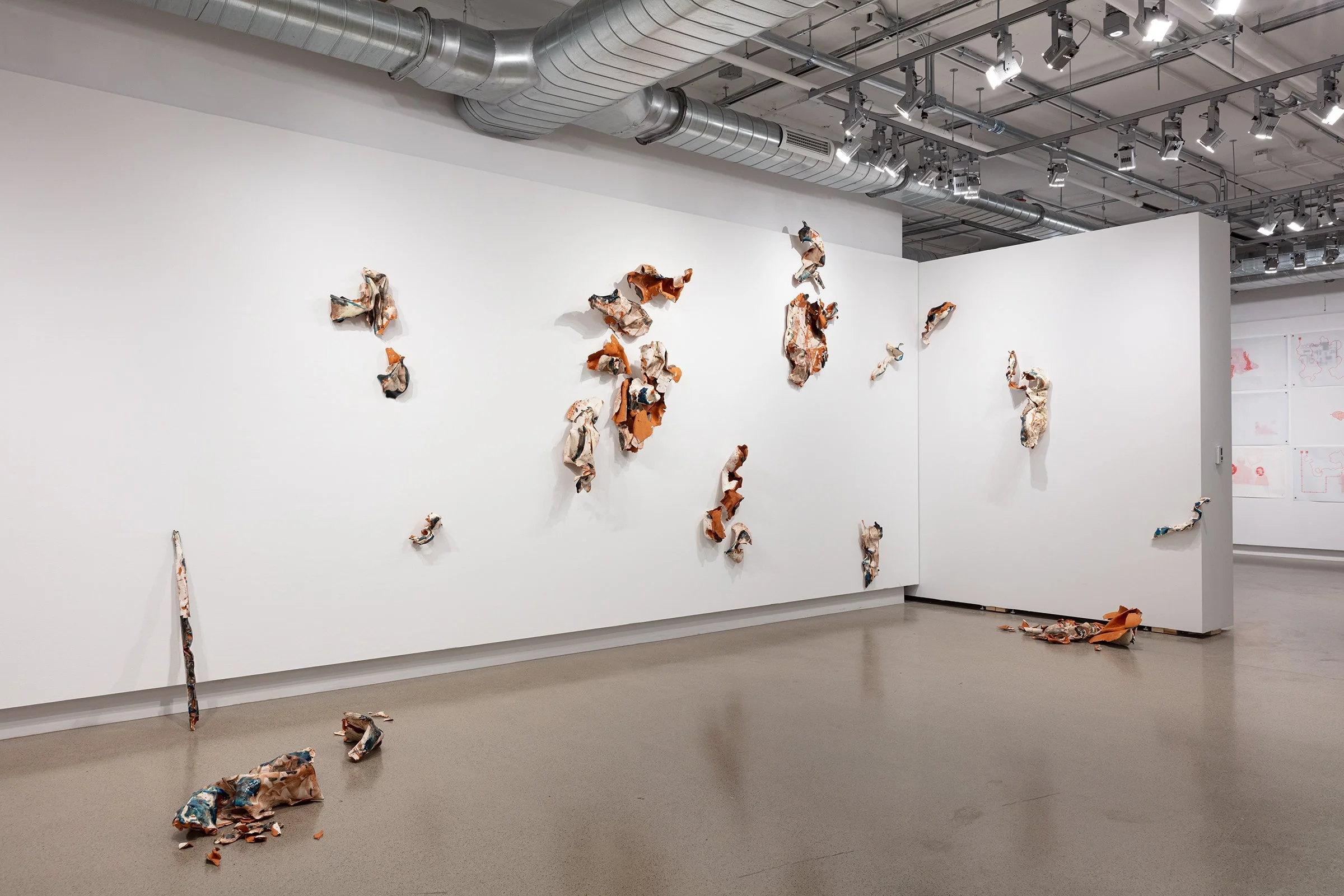11 Questions with JPRV
JPRV is a sculpture artist featured in Al-Tiba9 magazine ISSUE04, interviewed by Mohamed Benhadj.
JP Racca Vammerisse alias JPRV, a Paris based sculptor with a passion for ceramics He stages mixed media works masterfully, often injecting other materials such as textiles, plastic, glass, or cardboard, with a keen sense of drama. His artistic production displays exquisite technical craftsmanship, which is inspired by both popular and erudite culture. Sources range from Gothic Fantasy to Tex Avery, from gleeful reinterpretations of ornamental styles of Late Baroque architecture to artifacts of the 19th century, a period rich in remixes of revived styles.
His art juxtaposes elegance and excessiveness, embracing overload and outrageous color. JPRV's taste for the grotesque and polished ugliness is generally expressed in a non-naturalistic figurative mode that pushes decadence to the edge of fantasy cosplay.
Photo courtesy JPRV©
You graduated with honors from the ESAP / Pavillon Bosio, École Supérieure d’Arts Plastiques de la Ville de Monaco. How has this influenced you as a sculpture artist? What other influences shaped your formative years?
As a sculptural artist, the Pavillon Bosio allowed me to consider an artwork not only by itself but also by taking into account space, including the light. The pedestal is meaningful to me: it becomes an integral part of the piece itself, as it brings context and its own space. Together, they create their own reality. In my practice, the base itself is essential as it defines an exponential space that empowers the sculpture. In general, the artwork looks good before adding the bottom, but very quickly, the latter will catch up with it, to become both bases and work together, a totemic thought expressed as a whole.
During my formative years, a few different artists impressed me with their work, such as Johan Creten or Anne Wenzel. I was attracted by the profound, dark mystery hiding inside their enamel work: to me, it was like artifacts from another time or world. I was fascinated by the texture and the size of their art, and somehow that challenged me to create extra-large pieces.
How do you classify your art?
That’s tricky - I am having a hard time classifying it. I might define it by Baroque Singularity of Decay, or - I don’t know - Gothic Fantasy Nights, because these words might partially sum up the nocturnal universe, I construct. I don’t want my art to be restricted only to the medium that I use. The shapes that I make are pieces of a fragmented puzzle, part of my world of the outcast.
What influences your work today, and how do you create?
To assert oneself today as a sculptor is also to be part of a tradition. The fantastic aspect developed during the Belle Epoque (1880-1914) was nourished by many artists who are close to my contemporary plastic concerns. It started with a rediscovery, in Golfe Juan (South of France), of the dynasty of the Massier ceramists who played a crucial role in the renaissance of Vallauris ceramics. In addition to the rich bestiary developed, their sculptures took on color palettes and various enameling techniques (monochrome, polychrome, marbled, etc.). I more recently discovered Ohr’s eccentric pottery - George E. Ohr, artist and self-proclaimed "Mad Potter of Biloxi. I love the falling shape of his iridescent vases.
Shaped by uncertainty, somewhere between vertigo and faith, my artistic work is founded on empirical practice, blending trial and error, intuition, and research. My propensity to manufacture is related to the figure of the craftsman as demiurge - a producer of artistic pieces. I shape them, not at random, but by methodically pursuing an objective which consists in imposing on my materials a well-defined shape. As a demiurge, I think of reality as a creation before I reduce it to a fabrication mastering the arrangement and manipulation of the elements, through an empirical thought process. The fact that I apprehend thoroughly the way I will produce and process the material enables me to organize and act according to my dream world.
Where does your imagery come from? What, if any, sources do you use?
Saturnian at heart, I work in a way that reflects the nature of that melancholy star by creating a nocturnal territory without limits. Beyond certain states of trance, I can reach when working late at night, my interest in the night resides in its ability to become a timeless space devoted to dreams or hallucinations. The insecurity that results from this leads to three fundamental forms of anguish: implosion, engulfment, and petrification. It, therefore, becomes the theater of a strange reality that takes over three physical spaces: the sky, the sea, and the earth (caverns).
Your sculptures at first appear light, with color and detail, but looking deeper into the details and forms, they begin to seem darker, dangerous, and alive creatures, recalling fantastical images from the past. How would you describe the complex artistic production of these for our readers?
The shapes of all my sculptures belong to this nocturnal world where things turn into darker, infectious, live creatures. One of these physical spaces is “the heavenly night,” a night of soul and mystery, a passage between here and elsewhere. Sleep is a great refuge. Thus, insomnia takes on its full significance: my inability to settle comes from a call to this beyond, inviting me to look it in the face. Under my fingers will emerge a marriage of night and earth, as I bring about the petrification of the ghosts that assail me.
A second space is “the night of the abyssal depths.” From the Kraken, the mythical sea serpent, the abyssal depths evoke a matrice space that is both a source of life and engulfment. Working with color, I fashion a deep slime, sometimes glittery or iridescent, thanks to the luminous magic of enamels and other materials. The final space is “the underground night,” infernal depths, an invisible continent made up of a multitude of crevices that only artificial lights allow us to explore, the better to get lost. My sculptural work revolves around a central void; the forms which emerge from it oscillate between figuration and abstraction, implosion, and overflow.
Photo courtesy JPRV©
The colors you use in your ceramics, especially yellow and pink, might typically be described as “pretty.” However, what I find compelling is that you bring elements of ugliness and dirt to your work at the same time - like a bucket - to mix contradictory aspects and give them dimension. These feelings seem to emerge from a deep place in your soul; where do they come from?
The poet Baudelaire wrote: “Like a perfect chemist and like a holy soul. Because I extracted from everything quintessence, You gave me your mud, and I made gold.” There are several symbols associated with gold, including one that links it carefully with the mire. I go to my studio as other people go to church - I have a daily practice of sculpture. I prefer to work at night when possible because reality becomes less present, and everything is erased around me: only the sculpture remains. It’s close to an encounter with God, the creator, a demiurge, obviously!
Returning to the bucket is a common element in your sculptures - can you tell us the story behind this?
I have a pronounced taste for materials, some recovered during night wanderings, others worked with during residences in France or abroad. Raw materials - simple, modest, materials that can be moved "from the trash to eternity," as Tadeusz Kantor said. A more metaphysical approach accounts for a form of vanity, with perishable materials that have the mode of existence of decay. This is going from life to death.
The experience of disgust is not the experience of fear: we are afraid of a skeleton, but we are not afraid of a corpse. The corpse disgusts us because it shows us the passage from life to death, as a waste.
As your work transcends periods, if you had the power to travel back in time, which period would you love to live in to deepen your inspiration?
I think there would be several times: I would like to explore ancient Egypt to know the secret of the afterlife and the belle époque in France, to witness the development of ceramics techniques and recipes. I would also love to visit mysterious places and lost islands, such as Atlantis, to discover the reality of a phantasmagoric civilization. I’m still fascinated by ancient myths and their connection to us today.
Can you tell us about one of the most exciting and/or challenging projects you have worked on?
It goes a long way back to 2010, but the most exciting and challenging experience was my summer residency at the Watermill Center in Long Island, USA. This was an opportunity to create, with Anouk Berenguer (Anouk Arra), my first artistic collective, Group*50/50. We created ‘Place Publique,’ a large-scale installation, an Olympic podium surmounted by gallows in the forest, seen as inanimate sculpture or scenic device. It taught me to work in groups and to create a large-scale piece. In 2011 we were able to reiterate the residence, and we created a new installation: ‘Sleeping Land,’ a diving board attached to a tree overhanging an expanse of black water (dugout for the occasion), from which emerged dummy shark fins. Taï Timber, a musician, did a performance akin to the siren song on edge, replaying the artist's image facing creation. This period was a time for a lot of first experiences. After the 2011 residency, we hitchhiked on a road trip from NYC to Canada. I love creating in different spaces and countries because it brings me new and different energies to work with.
What are your upcoming projects?
I am currently taking part in a group exhibition, ‘De Natura Rerum’, in Noyon, where I am presenting my latest work until April: Trinity of Decay, a trio of floor-standing sculptures representing an allegory of death. In three steps, Nature performs her task of decomposition, starting from the image of flayed flesh; Funghi sprout in favorable soil from which all trace of the human is erased, and the gurgling of bubbles hints at the budding of bulbs in fertile ground.
I take part in ‘Le salon de la Mort,’ a group show in a gallery in the center of Paris and a future event in Luxembourg in 2021.
Lastly, who is someone’s creativity, you admire?
I admire many dead artists. Recently, I have oscillated between the sexual and fantastic graphic work of H. G. Giger and the organic and falling shapes of Ken Price.





















